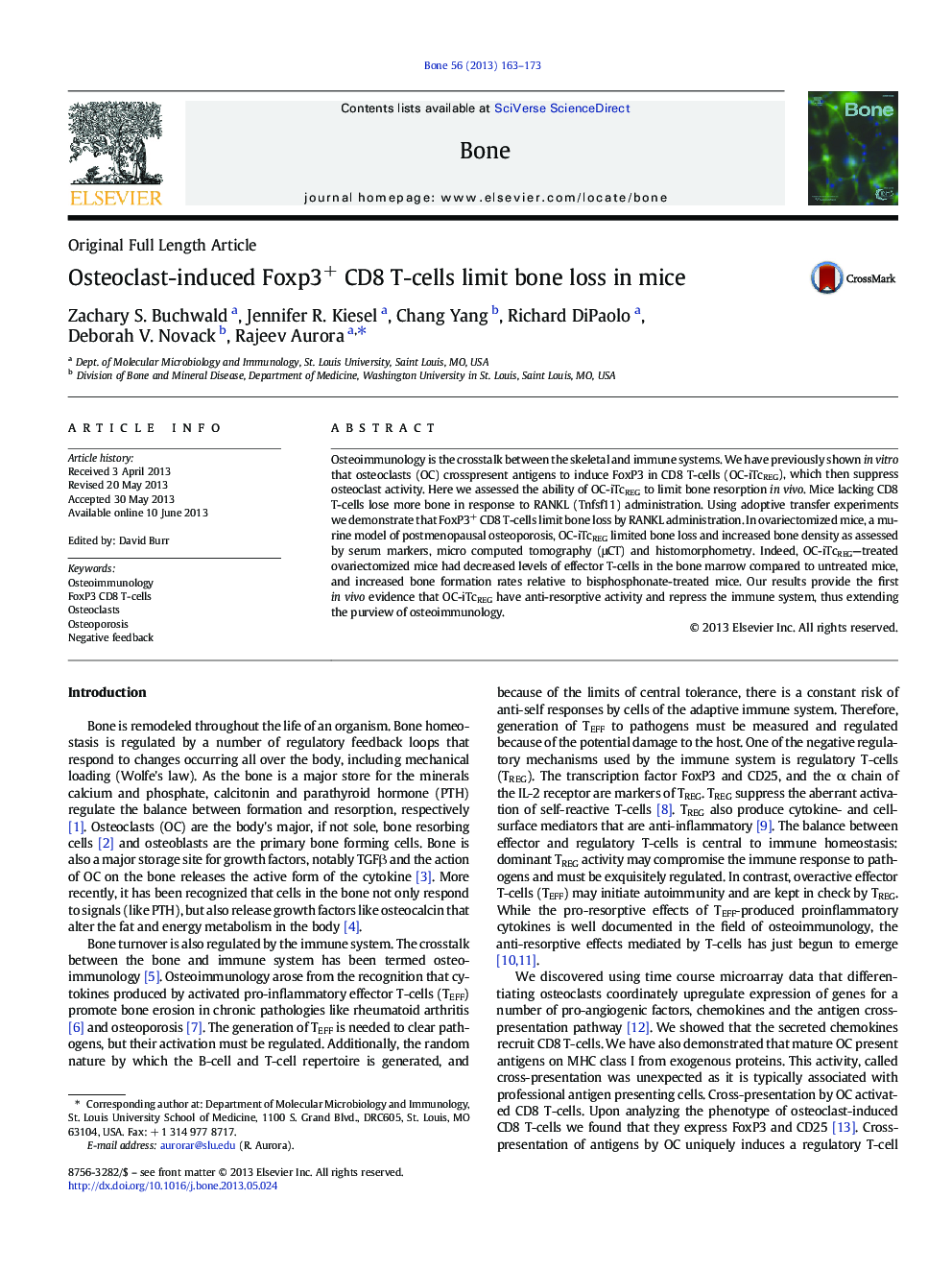| Article ID | Journal | Published Year | Pages | File Type |
|---|---|---|---|---|
| 5891146 | Bone | 2013 | 11 Pages |
â¢Transfer of CD8 T-cells with functional FoxP3 into T-cell-deficient mice limited bone loss in response to RANKL administration.â¢Transfer of OC-iTcREG into ovariectomized mice limited bone loss by decreasing osteoclast numbers and increased bone formation.â¢OC-iTcREG were also immunosuppressive in vitro and in vivo.â¢These studies establish a new physiological role for osteoclast-induced regulatory CD8 T-cells.â¢Together, our results indicate that osteoclasts regulate both the skeletal and immune systems through inducing regulatory CD8 T-cells.
Osteoimmunology is the crosstalk between the skeletal and immune systems. We have previously shown in vitro that osteoclasts (OC) crosspresent antigens to induce FoxP3 in CD8 T-cells (OC-iTcREG), which then suppress osteoclast activity. Here we assessed the ability of OC-iTcREG to limit bone resorption in vivo. Mice lacking CD8 T-cells lose more bone in response to RANKL (Tnfsf11) administration. Using adoptive transfer experiments we demonstrate that FoxP3+ CD8 T-cells limit bone loss by RANKL administration. In ovariectomized mice, a murine model of postmenopausal osteoporosis, OC-iTcREG limited bone loss and increased bone density as assessed by serum markers, micro computed tomography (μCT) and histomorphometry. Indeed, OC-iTcREG-treated ovariectomized mice had decreased levels of effector T-cells in the bone marrow compared to untreated mice, and increased bone formation rates relative to bisphosphonate-treated mice. Our results provide the first in vivo evidence that OC-iTcREG have anti-resorptive activity and repress the immune system, thus extending the purview of osteoimmunology.
